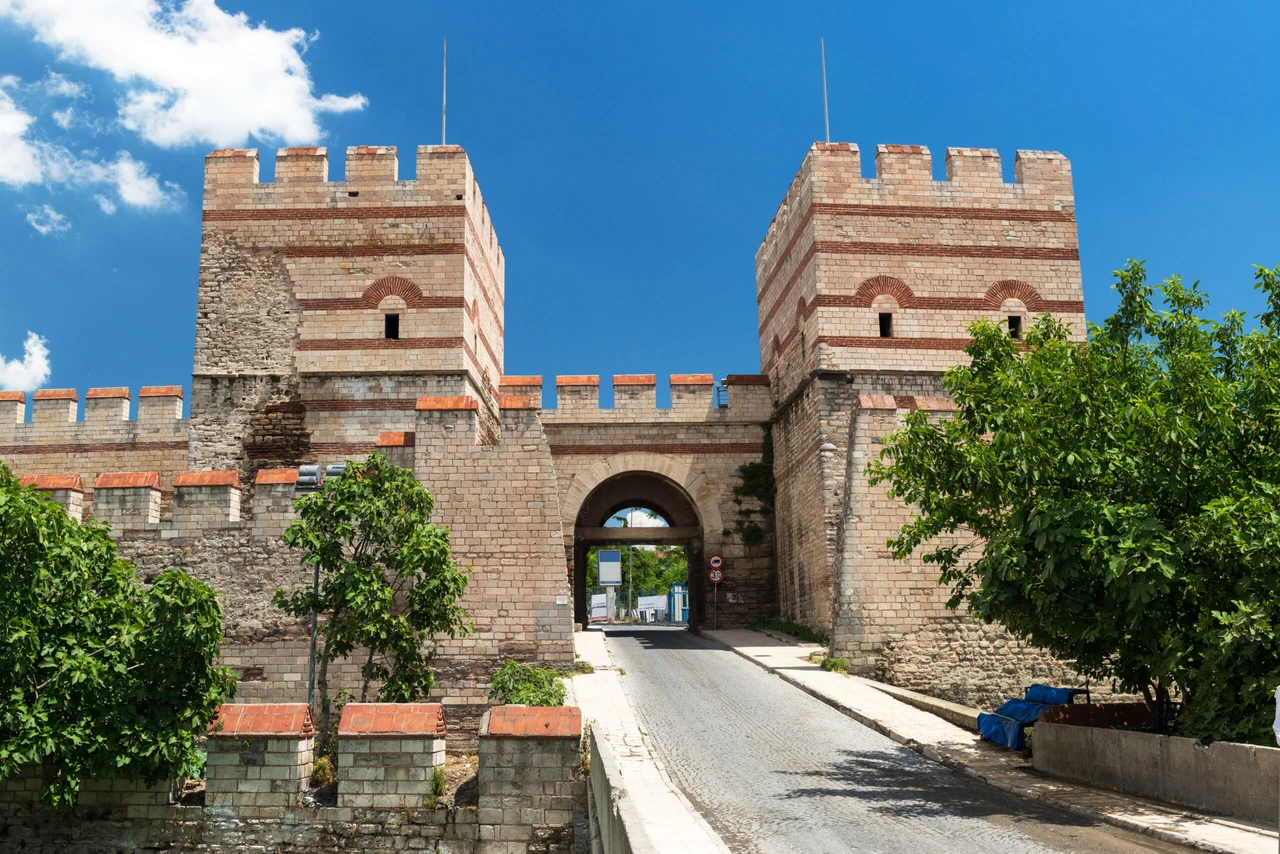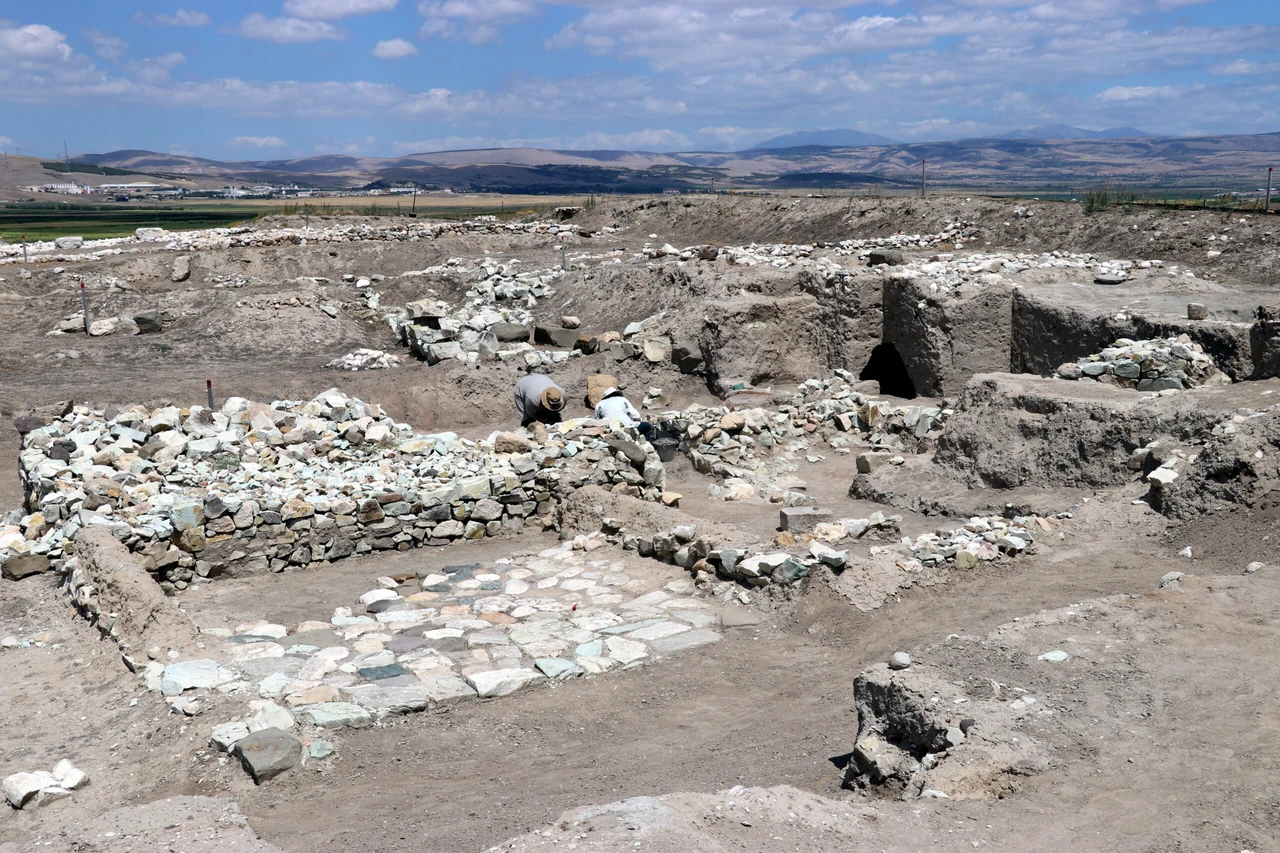Istanbul’s Basilica Cistern: Ancient marvel, modern exhibition site
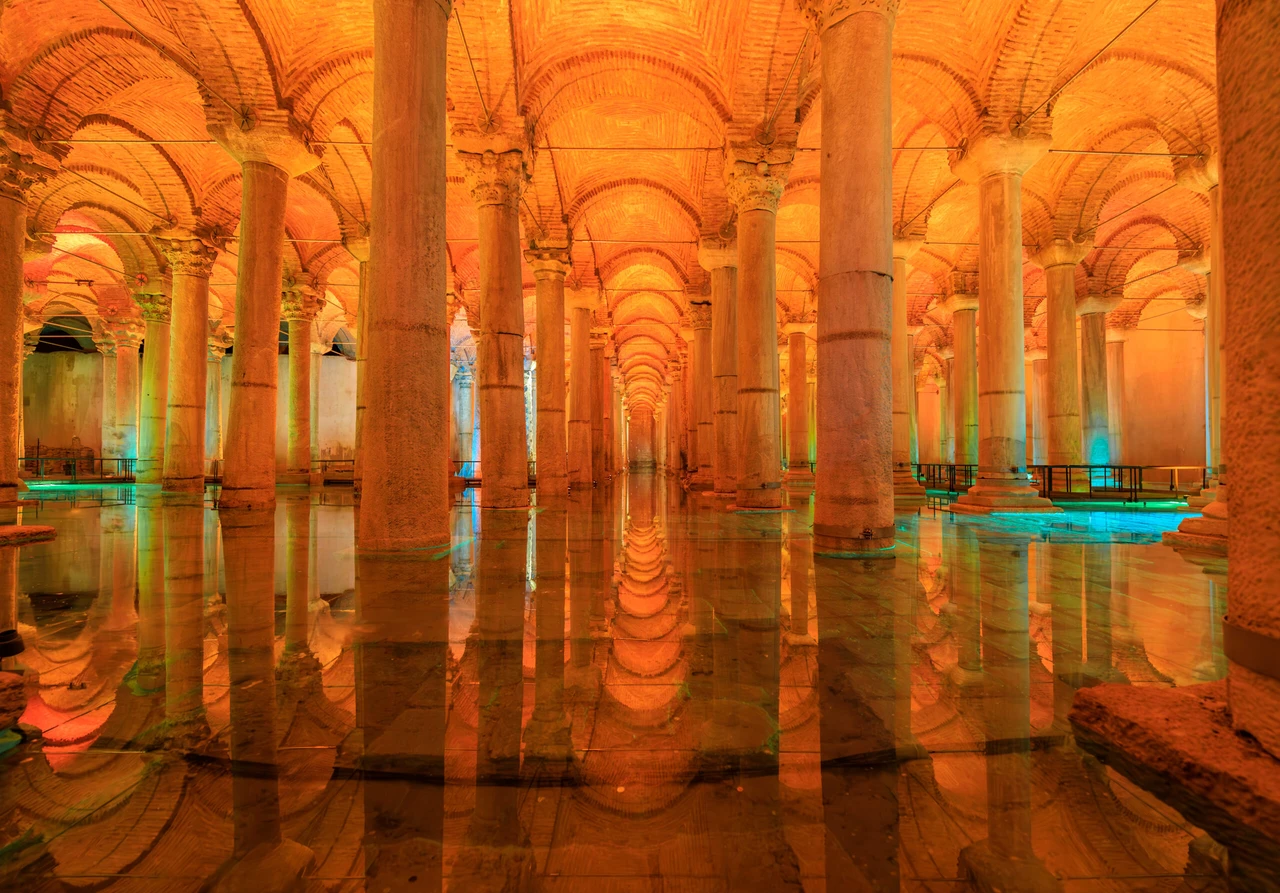 Roman columns inside Basilica Cistern or Yerebatan Sarayi, ancient underground water storage or reservoir, Istanbul, Türkiye, November 23, 2023. (Adobe Stock Photo)
Roman columns inside Basilica Cistern or Yerebatan Sarayi, ancient underground water storage or reservoir, Istanbul, Türkiye, November 23, 2023. (Adobe Stock Photo)
The Basilica Cistern, also known as Yerebatan Sarnici, stands as a significant piece of Istanbul’s rich historical fabric and has become a popular tourist destination in recent years.
The cistern, located in the historic peninsula near Hagia Sophia, was built by the Byzantine Emperor Justinian I between 527 and 565 A.D.
Often referred to as the “Subterranean Palace” due to its majestic marble columns rising from the water, it once provided a vital water storage solution for the city, capable of holding approximately 100,000 tons of water.
The restoration, reopening of Basilica Cistern
The Basilica Cistern underwent extensive restoration in recent years, led by the Istanbul Metropolitan Municipality’s Department of Cultural Heritage. Starting in 2016 and concluding in July 2022, this meticulous project aimed to preserve the cistern’s structural integrity and enhance its visitor experience.
The restoration team removed non-original concrete structures, installed a new flexible, permeable walkway closer to the water surface, and replaced corroded iron rods with stainless steel ones to improve earthquake resistance.
They also upgraded the lighting design, allowing visitors to fully experience the unique architectural features.
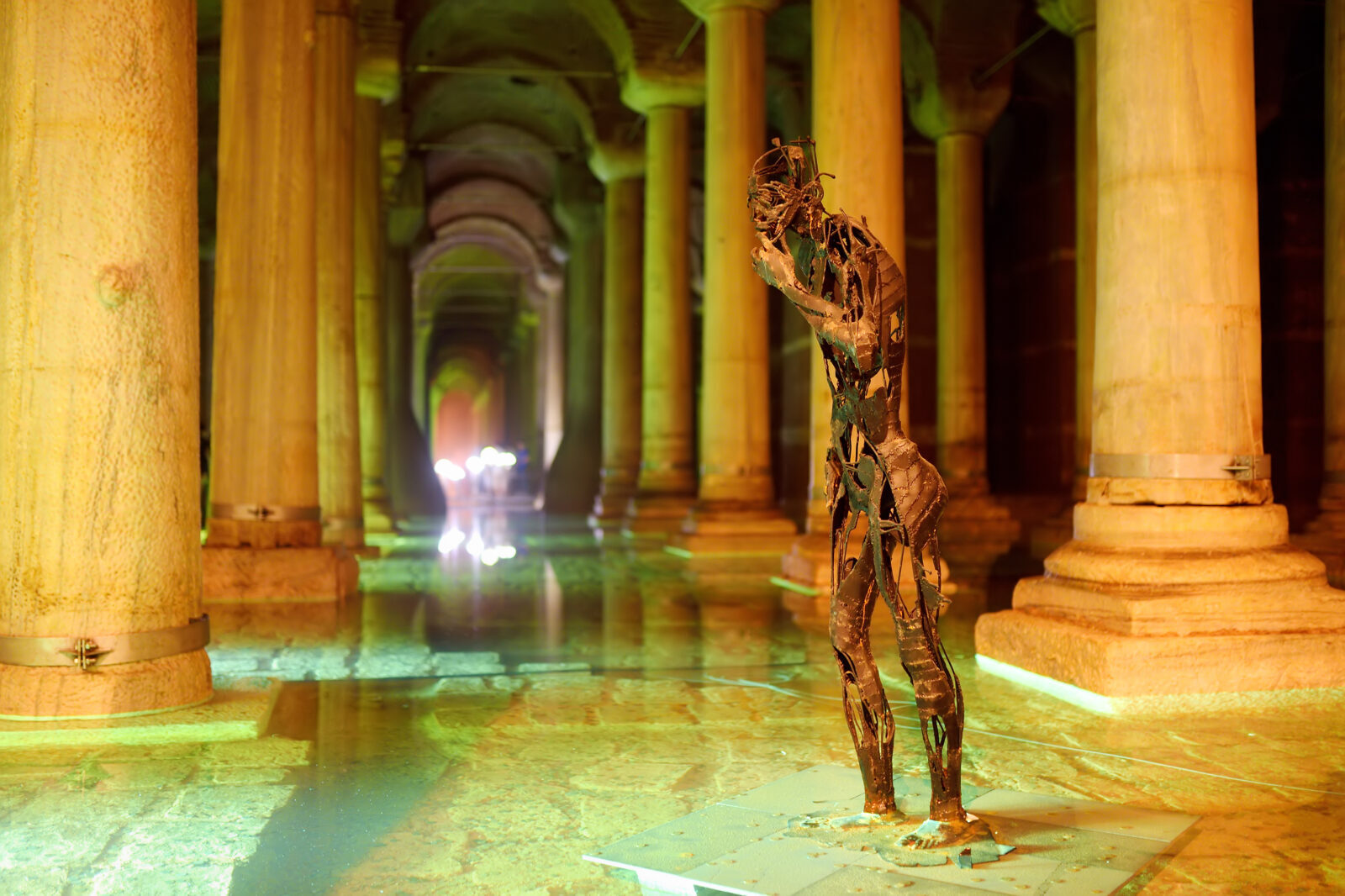
Historical significance of Basilica Cistern in Byzantine, Ottoman eras
The Basilica Cistern spans 140 meters in length and 70 meters in width, covering a total area of 9,800 square meters. Its 336 columns, each standing 9 meters high, create a labyrinthine, mystical ambiance that continues to captivate visitors.
The cistern’s construction involved a sophisticated system to ensure a reliable water supply for the city, particularly for the Great Palace of Constantinople. Water flowed into the cistern from the Belgrade Forest, over 19 kilometers away, through aqueducts such as the Valens Aqueduct.
Built to supply water to the Great Palace of Constantinople and other buildings on the First Hill, the cistern demonstrates the ingenuity of Byzantine engineering. The cistern’s capacity and reliability were crucial for the city’s survival, especially during sieges.
Over time, the structure also served the needs of Topkapi Palace after the Ottoman conquest in 1453. However, the Ottoman preference for running water led to the cistern being largely forgotten until its rediscovery in the 16th century.
The rediscovery of the Basilica Cistern is attributed to Petrus Gyllius, a French scholar who visited Istanbul between 1544 and 1550. He noticed locals drawing water and even fishing from wells inside their homes, leading him to explore and document the underground marvel. Gyllius’s writings brought renewed attention to the cistern, highlighting its architectural and historical importance.
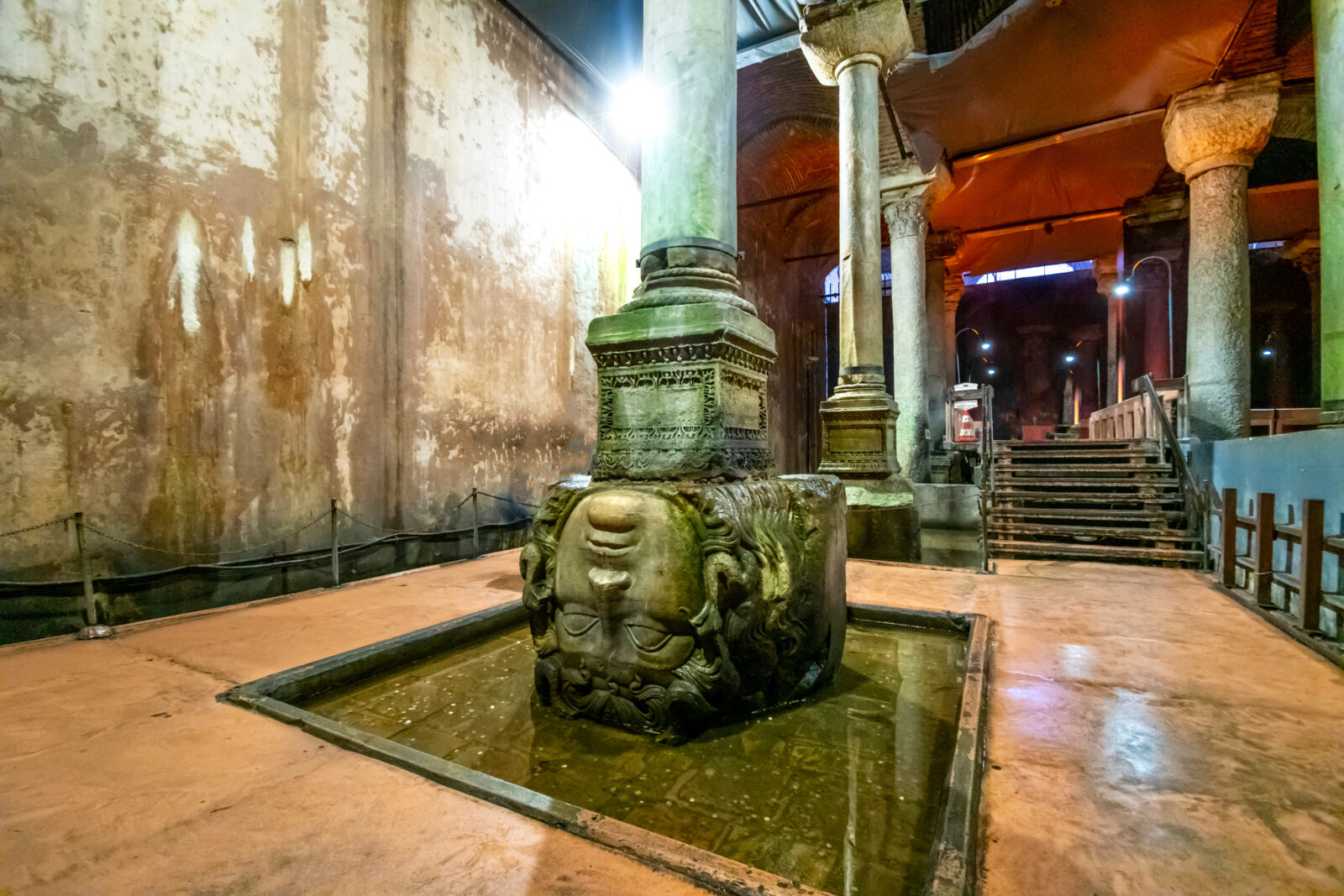
Intriguing Medusa heads of Basilica Cistern in Istanbul
Among the cistern’s 336 columns are the famous Medusa heads, which continue to intrigue visitors and scholars alike. These heads, repurposed as column bases, are shrouded in mystery and myth.
According to legend, Medusa, one of the Gorgons in Greek mythology, had the power to turn anyone who looked directly at her into stone.
The placement of the Medusa heads in the cistern, one upside down and the other sideways, is believed to be a protective measure against evil spirits or simply a practical solution by Byzantine builders using available materials.

Events, exhibitions at Istanbul’s Basilica Cistern
The Basilica Cistern is not just a historical site; it has become a vibrant venue for cultural events. Various exhibitions and artistic performances are regularly held within its atmospheric confines, blending the ancient with the contemporary.
This year, from Aug. 1 to Nov. 30 the cistern will host the “Gates of the Underground – Touching Space with Transition and Reflection” exhibition.
Organized in collaboration with the Istanbul Metropolitan Municipality’s cultural heritage department and the Czech Consulate in Istanbul, this event will feature works by renowned Czech sculptors Vlastimil Beranek and Jaroslav Prosek.
Curators Dr. Mahir Polat and Miroslav Kroupa have set up the exhibition to include crystal sculptures placed in the cistern’s waters. These sculptures interact with the cistern’s stone and water elements, creating a dynamic interplay of light and reflection.
The exhibition draws on Plato’s allegory of the cave, exploring notions of reality, mythology, and reflection. Beranek’s glass artworks engage with the cistern’s historic fabric, while Prosek’s pieces, incorporating materials like semi-fossilized oak, evoke the ancient origins of glassmaking in Mesopotamia.
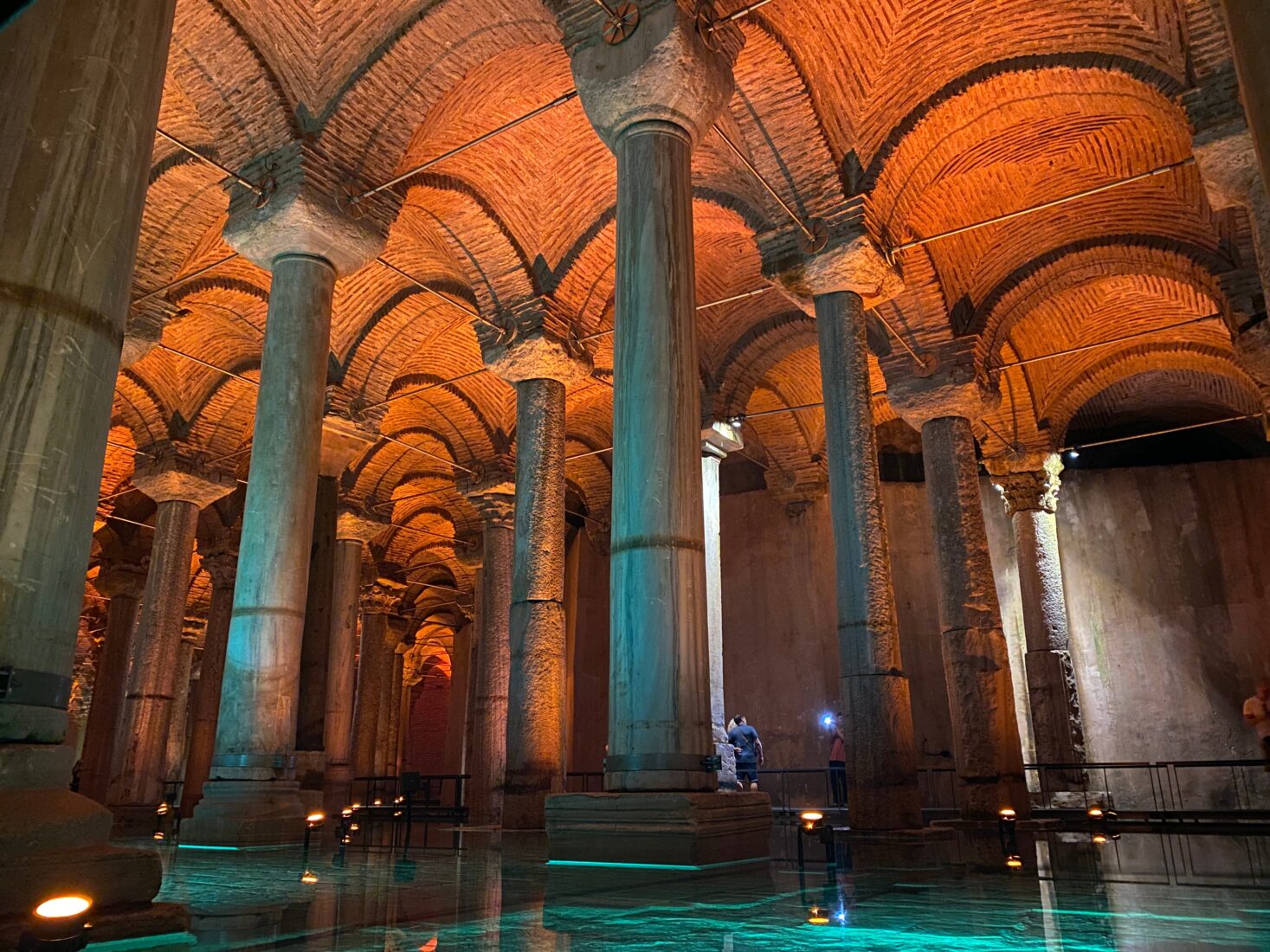
Visiting information for Istanbul’s Basilica Cistern
For those wishing to experience this confluence of history and art, the Basilica Cistern is open daily from 9 a.m. to 5 p.m. This landmark not only offers a glimpse into the ingenuity of ancient engineering but also serves as a living canvas for contemporary artistic expression. Visitors can expect to spend around an hour exploring the cistern and its many features.
The Basilica Cistern remains one of Istanbul’s most captivating historical sites. With its rich history, stunning architecture, and now, modern artistic exhibitions, it continues to draw visitors from around the world.

